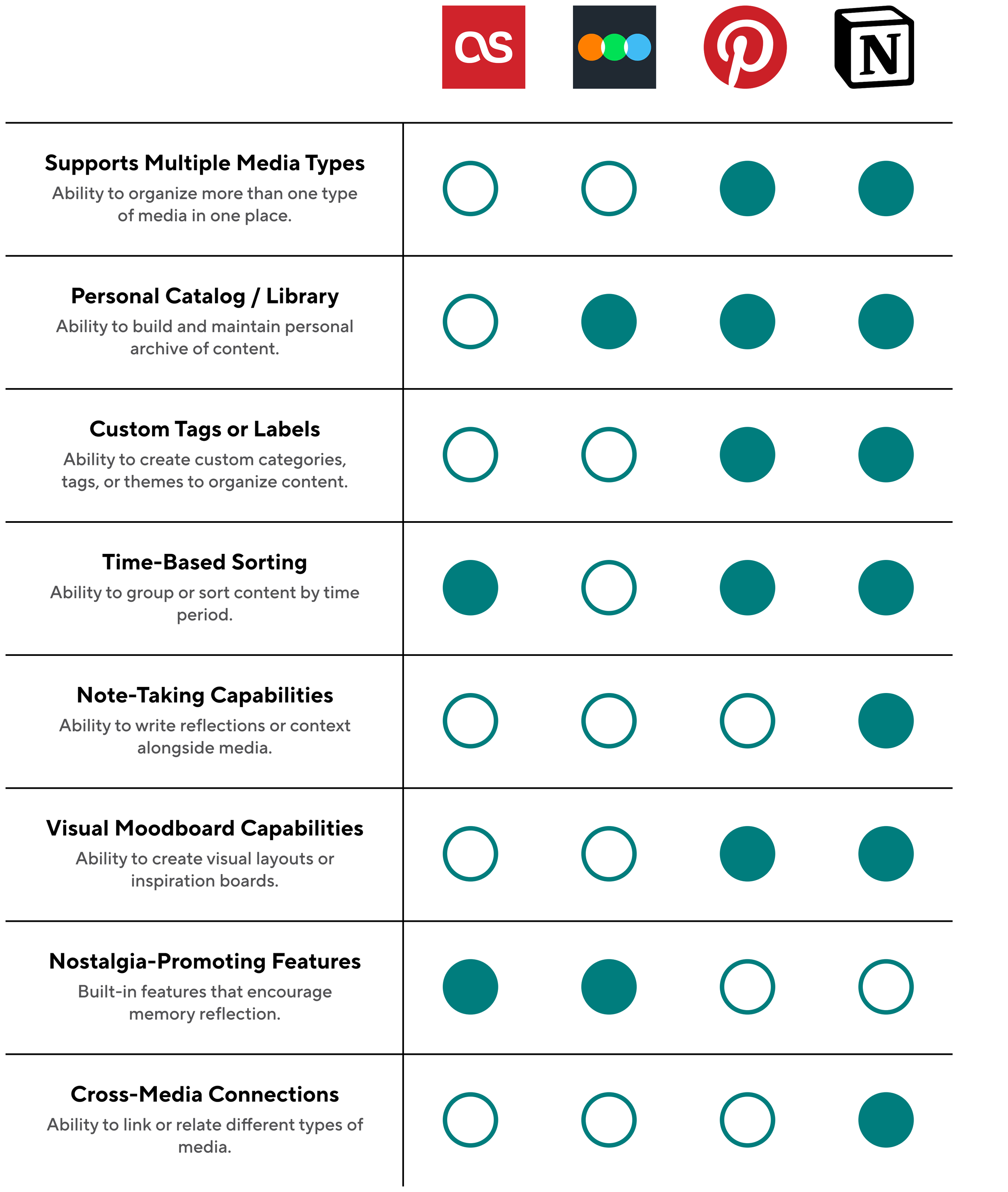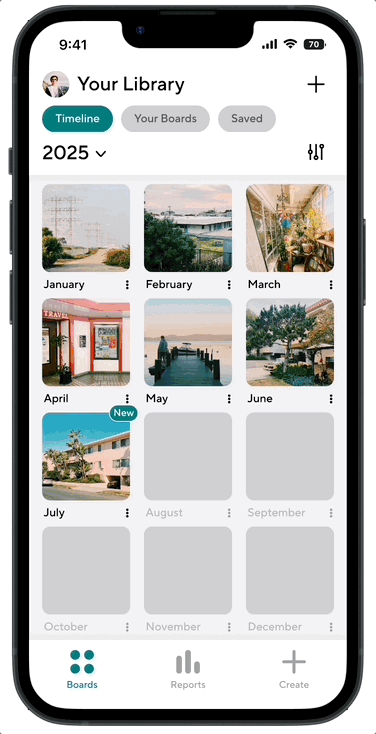Concept • Mobile App Design
Aulos
ROLE
Sole Designer & Researcher
TIMELINE
May 2025 - July 2025
TOOLS
Figma, Miro, Maze, Illustrator
INTRODUCTION
Our media habits are extensions of ourselves: the music we listen to, the movies we watch, the books we read. Web and mobile technologies allow us to record, catalog, and curate our experiences, yet no platform lets us effectively organize all forms of media together.
We Are What We Consume
SOLUTION
While many tracking apps today exclusively focus on consumption of a single medium, I decided to build a tool that allows users to record and reflect on all types of media consumption through timebased or custom-made moodboards. I set out to create an experience that allows users to not only draw connections between different types of media, but to show how the media we consume reflects our everyday lives.
Record Your Media Consumption All In One Place
Skip the tedium of tracking what you’ve watched, read, or listened to. Aulos generates a monthly multimedia moodboard based on your connected media accounts—ready to refine and make your own.
Your Month in Media
Go deeper with custom themed moodboards or personal leaderboards. Add images and notes to help you draw connections and personalize your experience.
Make It Your Own
Aulos logs your cross-platform media habits and gives you insights by comparing each month’s consumption. See what changed, what stuck, and what shaped your inner world.
See Your Habits Evolve
01. RESEARCH
With over two decades of digital history behind us, mobile technologies and social media have become archives of personal memories.
Music and media are central to how we remember, understand, and share our personal histories—and technology has become the primary vehicle for engaging with these memories. Designing an interface that catalogs personal media and facilitates meaningful reflection has the potential to offer a deeply resonant and valuable user experience.
Nostalgia Has Gone Digital
By analyzing four competitors—Last.fm, Letterboxd, Pinterest, and Notion—I discovered clear market gaps Aulos is uniquely positioned to fill, most notably, the support for multiple media types, visual moodboarding, and chronological organization of media.
Competitive Analysis
02. EMPATHIZE
My survey explored the 3 main problems that users face while tracking their media consumption: Tedium, Commitment and Consistency, and Platform Overload. Media tracking is often a manual, time-consuming process and with busy schedules and competing responsibilities, users frequently cited a lack of time or mental bandwidth to track media consistently, even when they want to. Even worse, users have to juggle multiple apps to track different types of media leading to fragmented, overwhelming experience for media tracking.
Survey Analysis
Based on insights from user research, how might we design a mobile experience that empowers users to seamlessly document and organize their media habits and provide consumption analytics to help users recognize patterns, track their evolving tastes, and build self-awareness over time.
Problem Statement
03. IDEATE
I designed an information architecture that defined the structure of the experience and organized its core features.
Information Architecture
I drafted 40 low fidelity wireframes to test different ways to organize information in my app’s design. These served as valuable references as I began increasing the fidelity of wireframes.
Low Fidelity Paper Wireframes
04. PROTOTYPE
IMPLEMENTING FEEDBACK #1
Reducing Friction in Onboarding
Asking users to connect ALL of their streaming platforms at once is time-consuming and likely to increase user dropoff.
Pain Point
Ask users to pick their go-to streaming service per category. Limit to only “Music” and “TV / Movies.” User research indicated that these categories are widely used, while other media types are not.
Solution
Implementing Feedback #2
Improving the “Create Board” Flow
CTA’s such as “Adding a Title” or “Add Media” were not clear to users during testing.
Pain Point
Create an easer, step by step flow to help guide users towards creating a board.
Solution
Minor Iteration #1
Improved “New” Indicator on Boards
Changed text to “New,” repositioned label to a floating badge overlay, added border for image separation.
Minor Iteration #2
Improved Bottom Navigation Bar
Increased icon size, reduced spacing, created custom icons.
05. HI-FI DESIGN
Connect Your Media Apps
Select your go-to media apps in onboarding. Connect the rest in settings.
Reflect on your consumption habits. Discover the media that defined your month with accurate, powerful insights.
Make Meaning Of Your Habits
Create A Board With The Media That Inspires You
Experience a streamlined approach to logging media that fit together.















